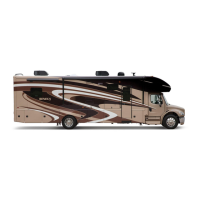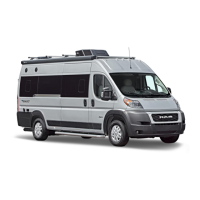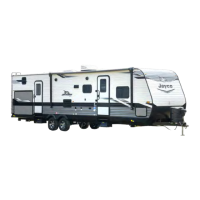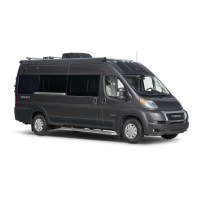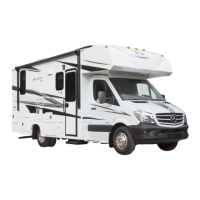68
The shore power cord is designed to continuously carry the 50 AMP current ow required to
power each leg of the electrical system. It also creates a critical ground connection between
the vehicle electrical system and the campground shore power receptacle.
Always test the external power source (i.e., the campsite power receptacle or electrical box)
with a ground monitor before connecting your power cord to it. If the ground monitor indi-
cates ‘reverse polarity’ or an ‘open ground’.
Regularly inspect the shore power cord for cuts, cracks, worn insulation and other damage.
Have the power cord replaced immediately if problems exist.
When connecting appliances to the electrical system, 120-volt power usage is limited to 50
AMPs per electrical system leg for a total of 100 amps. Operating appliances collectively
places an added load on your 120-volt electrical system.
A circuit breaker “trip” may occur if you overload the recreation vehicle and/or campground
electrical system. The amperage rating of individual appliances can be calculated by divid-
ing appliance wattage consumed (normally listed on the appliance) by nominal design volt-
age (120 for a 120-volt appliance). For example: 1200 watts divided by 120-volts equals 10
amps.
Generator
Your motor home is equipped with a diesel powered generator. The generator produces
120/240-volt power compatible with the motor home electrical system. It can power the
entire motor home when 120/240-volt shore power is not available.
1. Make sure the carbon monoxide detector is working.
2. Turn o air conditioners and all other 120-volt appliances.
3. Check for fuel, exhaust and coolant leaks.
Sleeping in vehicle, unless vehicle has a working CARBON MONOX-
IDE detector.
Parking vehicle in garage or conned space.
Parking vehicle for storage.
Servicing vehicle for storage.
Servicing generator.
Servicing batteries.
Servicing appliances or electrical systems.
Fueling the vehicle.
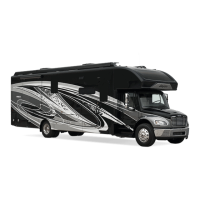
